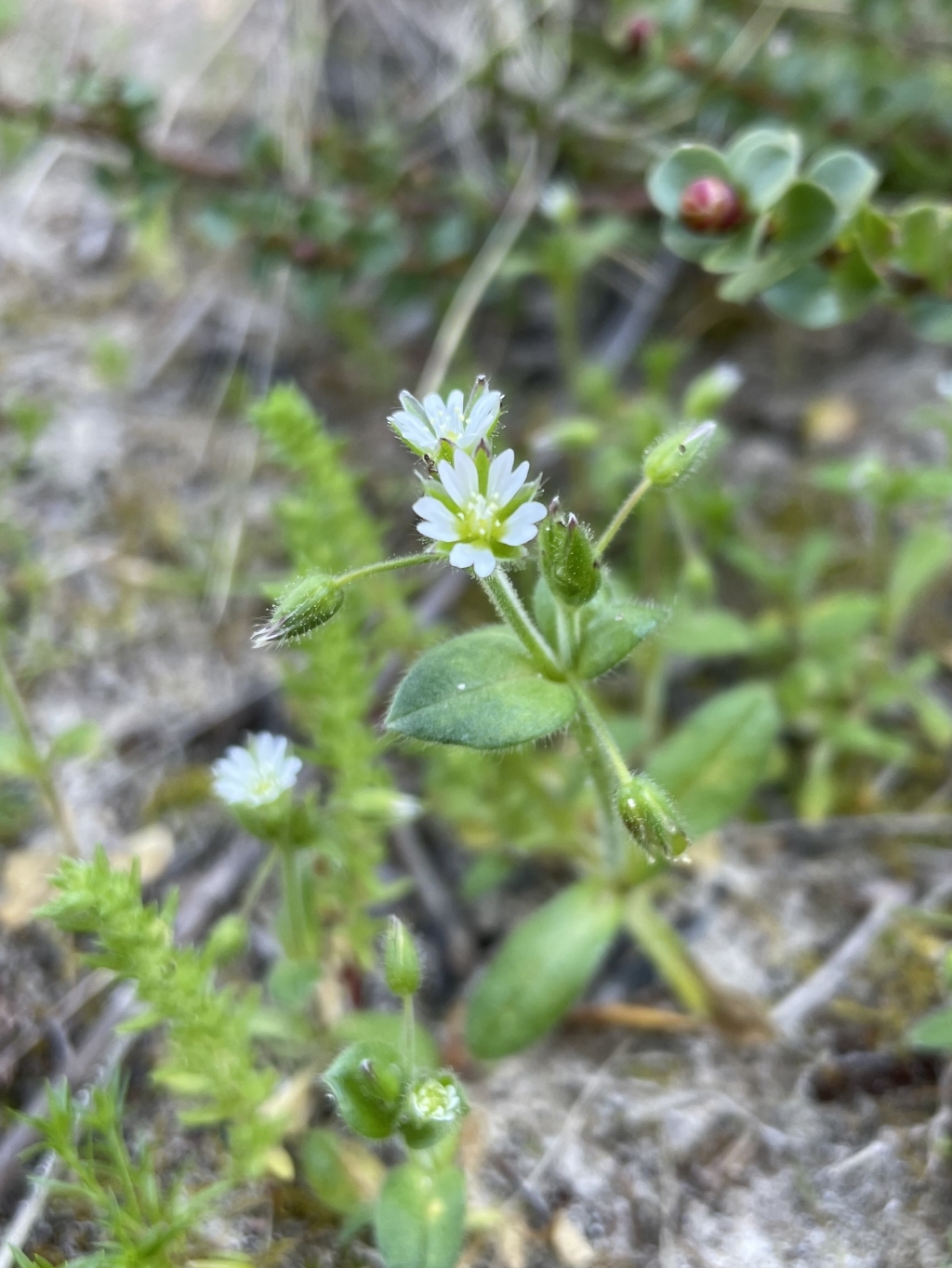Cerastium pumilum
Curtis Curtis's Mouse-ear ChickweedAnnual with slender taproot; hairs glandular and eglandular. Stems diffusely-branched, 2–22 cm long. Lower leaves oblanceolate-spathulate, sessile or with petioles to 12 mm long; upper leaves sessile, linear-lanceolate to ovate-oblong, 4–16 mm long, 2–9 mm wide. Inflorescence few-flowered; all bracts herbaceous or upper with narrowly scarious margins. Flowers (4–)5-merous; pedicel equalling or longer than, and curved just below, capsule; calyx glandular-pilose, and sparsely eglandular-hairy above, sepals oblong-lanceolate, 4–5 mm long, obtuse to acute, margins broadly scarious; petals two-thirds to c. equalling sepal length, one-quarter to one-fifth bifid; styles 5. Capsule straight to distinctly curved, 5–8(–10) mm long; seeds pale to chestnut-brown, coarsely tuberculate, 0.4–0.7 mm diam. Flowers Oct.
GleP, Brid, VVP, GipP, OtP, DunT, NIS, EGU, HSF, HNF, VAlp. Also naturalised WA, SA, NSW. Native to Europe from Scandinavia southwards, North Africa, western Asia. An apparently rare weed of disturbed soils, but perhaps more widespread and overlooked.
Adams, L.G. (1996). Caryophyllaceae. In: Walsh, N.G.; Entwisle, T.J., Flora of Victoria Vol. 3, Dicotyledons Winteraceae to Myrtaceae, pp. 228–271. Inkata Press, Melbourne.
 Spinning
Spinning



